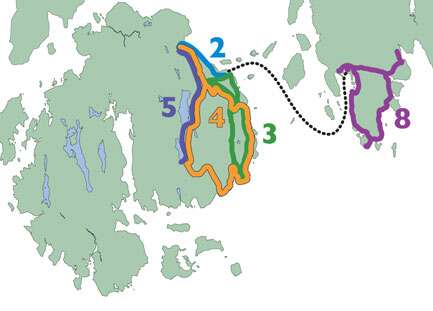
Processing Your Payment
Please do not leave this page until complete. This can take a few moments.
- News
-
Editions
-
- Lists
-
Viewpoints
-
Our Events
-
Event Info
- Women's Leadership Forum 2025
- On the Road with Mainebiz in Bethel
- Health Care Forum 2025
- On The Road with Mainebiz in Greenville
- On The Road with Mainebiz in Waterville
- Small Business Forum 2025
- Outstanding Women in Business Reception 2025
- On The Road with Mainebiz in Bath
- 60 Ideas in 60 Minutes Portland 2025
- 40 Under 40 Awards Reception 2025
- On The Road with Mainebiz in Lewiston / Auburn
- 60 Ideas in 60 Minutes Bangor 2025
Award Honorees
- 2025 Business Leaders of the Year
- 2024 Women to Watch Honorees
- 2024 Business Leaders of the Year
- 2023 NextUp: 40 Under 40 Honorees
- 2023 Women to Watch Honorees
- 2023 Business Leaders of the Year
- 2022 NextUp: 40 Under 40 Honorees
- 2022 Women to Watch Honorees
- 2022 Business Leaders of the Year
-
-
Calendar
-
Biz Marketplace
- News
- Editions
- Lists
- Viewpoints
-
Our Events
Event Info
- View all Events
- Women's Leadership Forum 2025
- On the Road with Mainebiz in Bethel
- Health Care Forum 2025
- On The Road with Mainebiz in Greenville
- On The Road with Mainebiz in Waterville
- + More
Award Honorees
- 2025 Business Leaders of the Year
- 2024 Women to Watch Honorees
- 2024 Business Leaders of the Year
- 2023 NextUp: 40 Under 40 Honorees
- 2023 Women to Watch Honorees
- 2023 Business Leaders of the Year
- + More
- 2022 NextUp: 40 Under 40 Honorees
- 2022 Women to Watch Honorees
- 2022 Business Leaders of the Year
- Nomination Forms
- Calendar
- Biz Marketplace
Acadia’s 'quiet side' neighbors request Island Explorer service this year
 File photo / Laurie Schreiber
The Island Explorer fare-free bus system is a popular option for getting around Acadia and its surrounding communities. A bus is seen here pre-2020 at Bar Harbor’s village green.
File photo / Laurie Schreiber
The Island Explorer fare-free bus system is a popular option for getting around Acadia and its surrounding communities. A bus is seen here pre-2020 at Bar Harbor’s village green.
Two towns on Mount Desert Island’s “quiet side” were left out of this year’s schedule for the free shuttle bus service called the Island Explorer.
Now the joint Southwest Harbor & Tremont Chamber of Commerce has requested reinstatement of at least one Island Explorer bus this year, to run a loop between the two towns.
The request was submitted Monday to the service’s operator, Downeast Transportation Inc. in Ellsworth.
The Island Explorer is a free, seasonal shuttle bus service that features routes linking hotels, inns and campgrounds with destinations in Acadia National Park and neighboring village centers.
Downeast Transportation suspended the service in 2020. And for 2021, the service has been substantially curtailed.
“Only selected routes will operate in 2021,” the company said on its website. “We hope to restore full service in 2022.”
Runs began on May 26 on the Schoodic Peninsula section of the park. Operation on the east side of Mount Desert Island, where the town of Bar Harbor and the bulk of Acadia National Park are located, is scheduled to begin June 23 and run through Oct. 11.
That schedule left out the west side of the island. The towns of Tremont and Southwest Harbor, as well as some portions of Acadia and a village that's part of the town of Mount Desert, are on the west side.
Locally called the “quiet side” because of its seclusion compared with busy Bar Harbor, the west side has numerous Explorer stops at trailheads and within communities. The Explorer is considered an important option for visitors to access amenities and for seasonal employees to get to jobs around the island.
The Island Explorer bus system began service in 1999 with eight propane-powered buses serving 141,000 riders, which was 5% of the park’s visitation of 2.6 million that year.
In 2019, Island Explorer served 647,000 riders, or 19% of the park’s visitation of 3.4 million that year, with a fleet of 30 buses.
While free to riders, the system is funded primarily by park entrance pass fees, along with funding from Maine Department of Transportation, Friends of Acadia, L.L.Bean Inc., passenger donations, and local towns and businesses.
Reduced capacity
Downeast Transportation decided against operating the Explorer in Mount Desert, Southwest Harbor and Tremont this season “because we will be at significantly reduced capacity on all buses and do not have the ability to operate adequately there this season,” the agency’s executive director, Paul Murphy, told Mainebiz.
The agency also significantly reduced service in Bar Harbor this season, he added.
The chamber’s proposal stems from increased visitation to Bass Harbor Head Light, one of Acadia’s most well-known landmarks, and to two nearby trails called Ship Harbor and Wonderland.
According to the proposal, the small parking lots at the three attractions often fill up, with vehicles parking on adjacent roads, which include a residential neighborhood.
“The heart of the problem is that during the summer, there are too many cars on Lighthouse Road and 102A,” the proposal says. “This results in overflowing parking areas, potential public safety hazards, and disappointed visitors.”
To reduce the number of cars, the chamber proposed a bus route to visit major Acadia attractions in the two towns along with various parking lots where visitors can leave their cars. The lots would be marked with signs and the chamber would produce and distribute route maps to local visitor centers and businesses.

The chamber’s vice president, Alan Feuer, told Mainebiz the proposal received unanimous support from the Tremont and Southwest Harbor select boards.
Murphy said his agency will review the proposal with its partners at Acadia National Park and formulate a response over the coming days.
Changing guidance
Planning for this year’s operation of the Explorer began six months ago, when reduced capacity guidelines were still in place, Acadia’s management assistant, John Kelly, told the Acadia Advisory Commission at its virtual meeting on Monday.
At the time, social distancing guidelines issued by the state allowed only 12 passengers per bus, compared to the normal capacity of 30 seated passengers and 14 standing.
As a result, Kelly said, service for this summer was scheduled for key routes that serve the greatest numbers of riders balanced against the cost of running the system. That included loops with stops at popular spots such as Sand Beach and Jordan Pond House.

Since then, new guidance was developed that allows 30 passengers per bus, he said.
As a result, the park asked Downeast Transportation to include an additional loop also designed to serve as many riders as possible by hitting Acadia’s Blackwoods Campground along with motels and campgrounds along busy Route 3, the primary corridor to Acadia and its visitor center.
“They are the shortest routes we’re adding to serve the greatest demand going into the park,” he said.
However, he added, increased capacity only frees up a few buses. The system is further challenged by a shortage of drivers. Downeast Transportation had 100 drivers ready to go earlier this year, but was down to 83 before the season even started, Kelly said.
Returning to traditional routes this summer would do more harm than good, Murphy told the commission.
“People would expect that they will be served and we would end up leaving people standing waiting for buses for hours at a time,” he said.
He added, “If this were a normal year and we had planned for a normal year, we’d be operating all over the island. And that’s our plan for next year.”













0 Comments